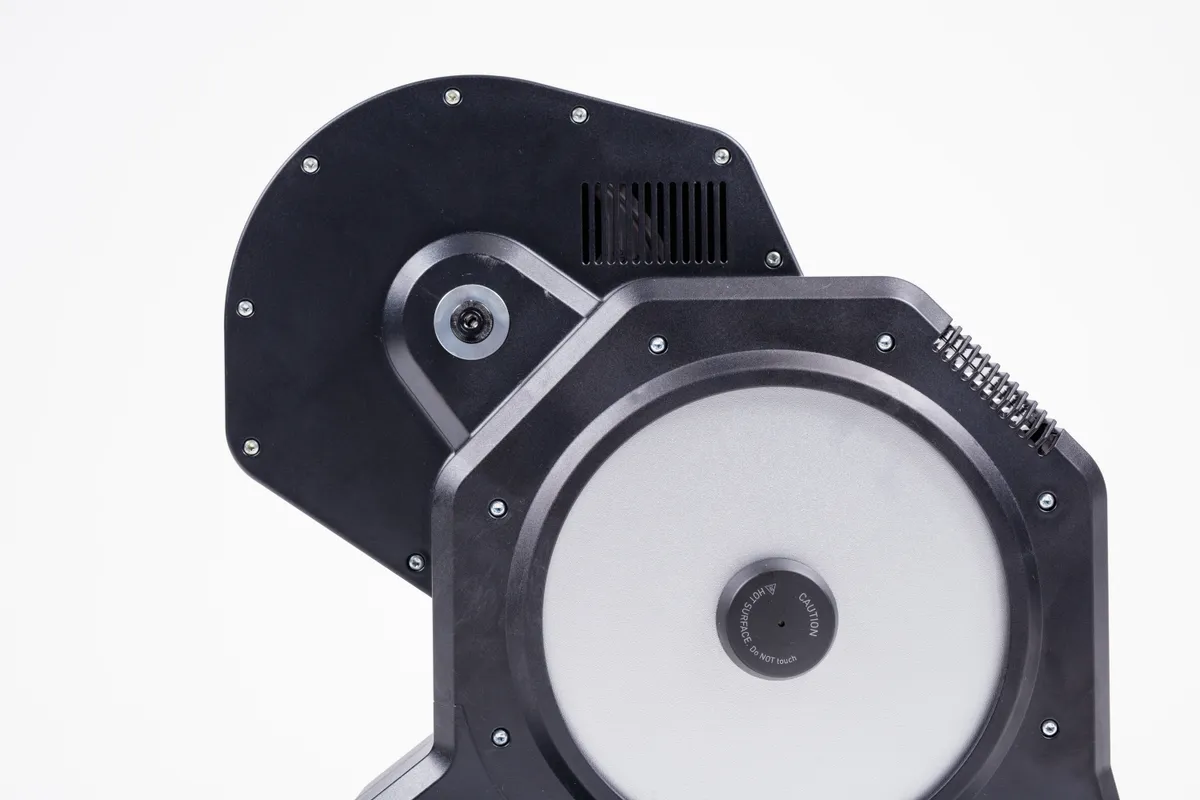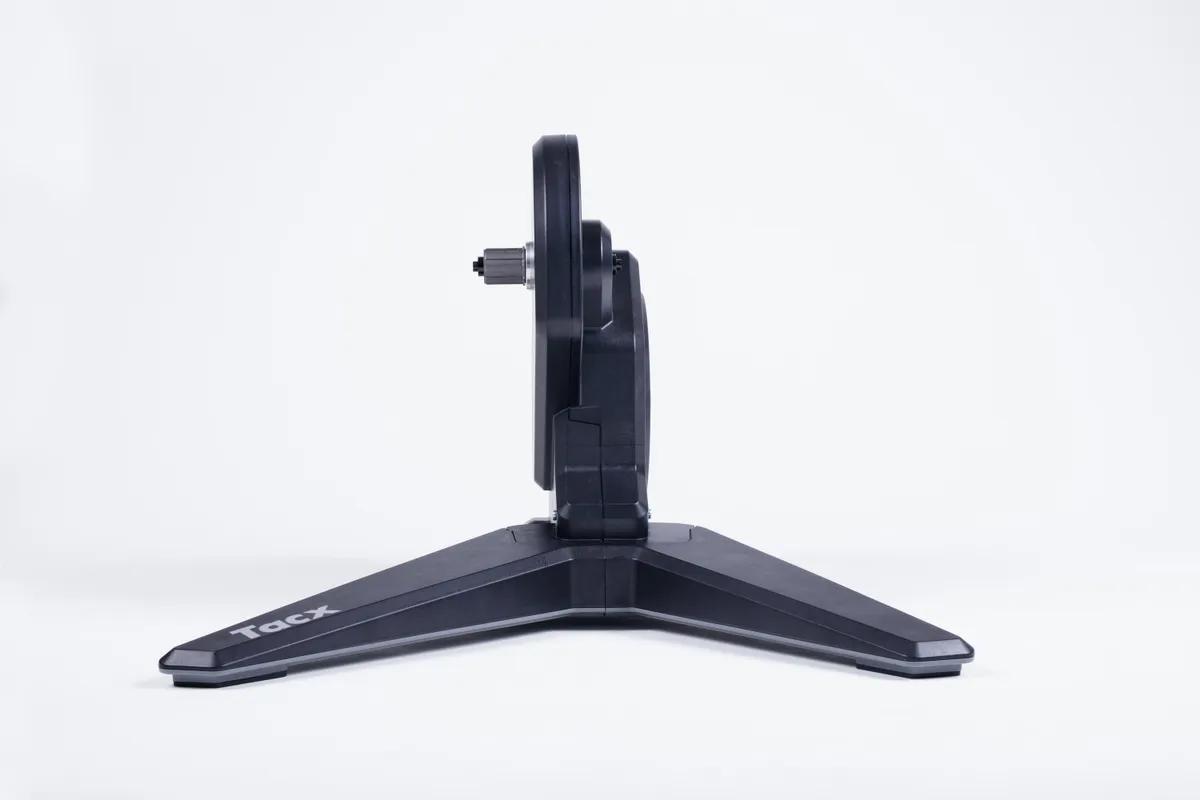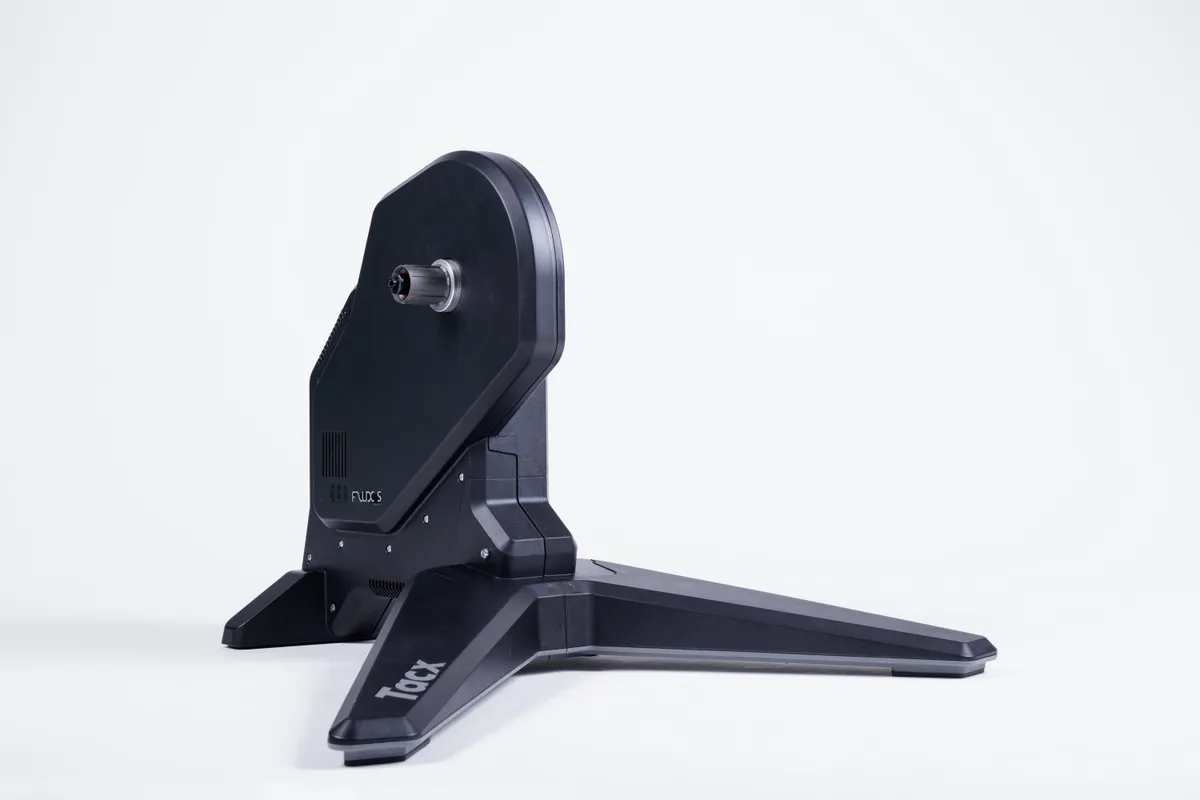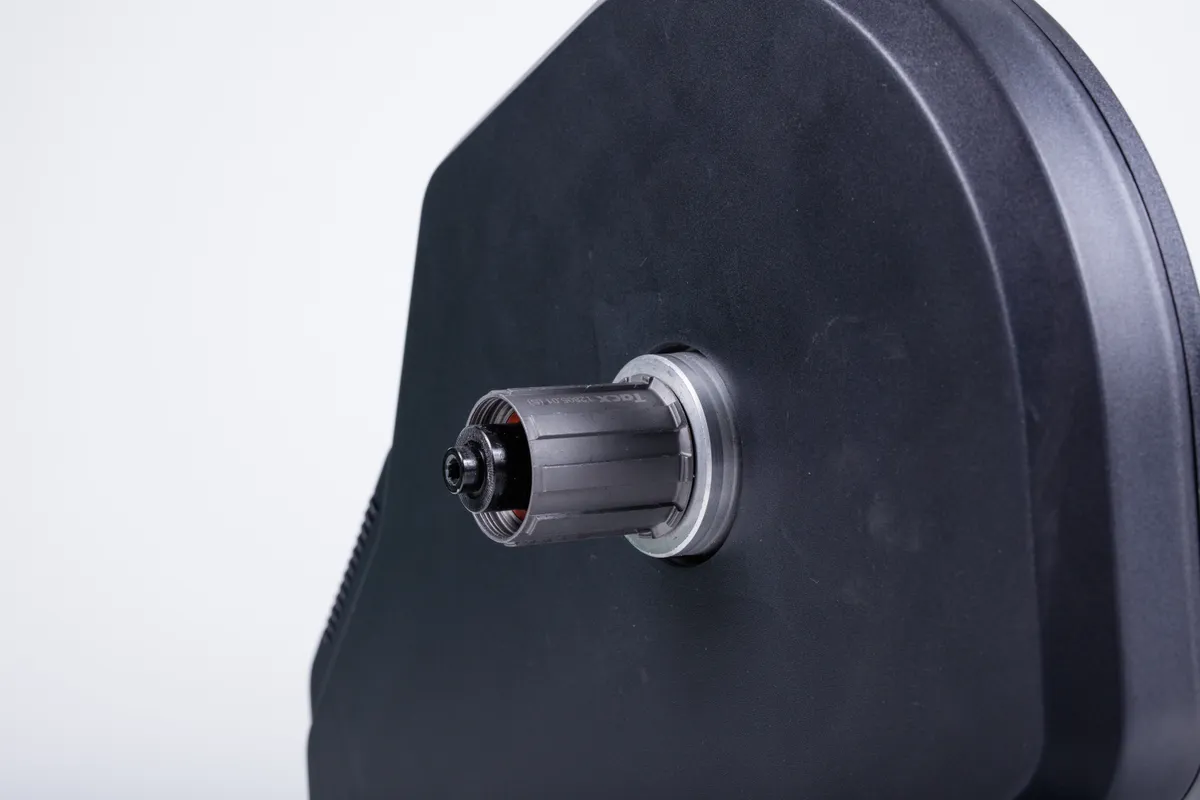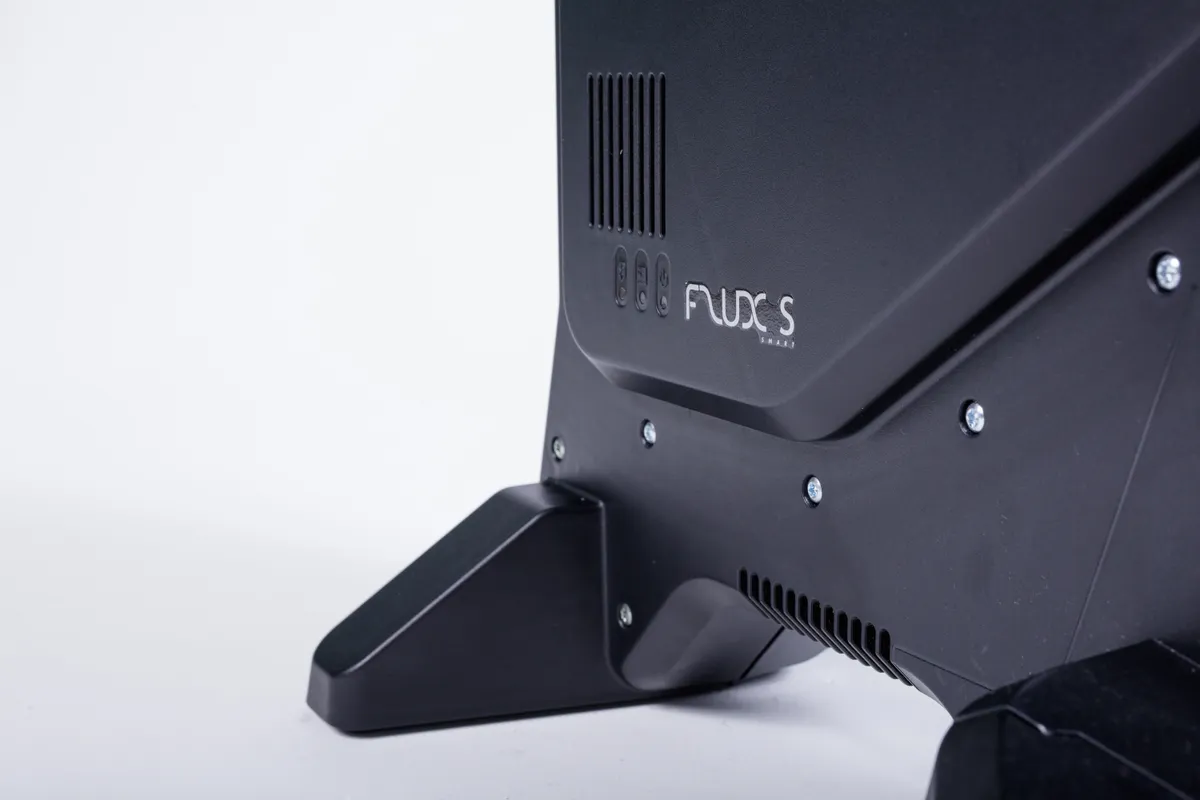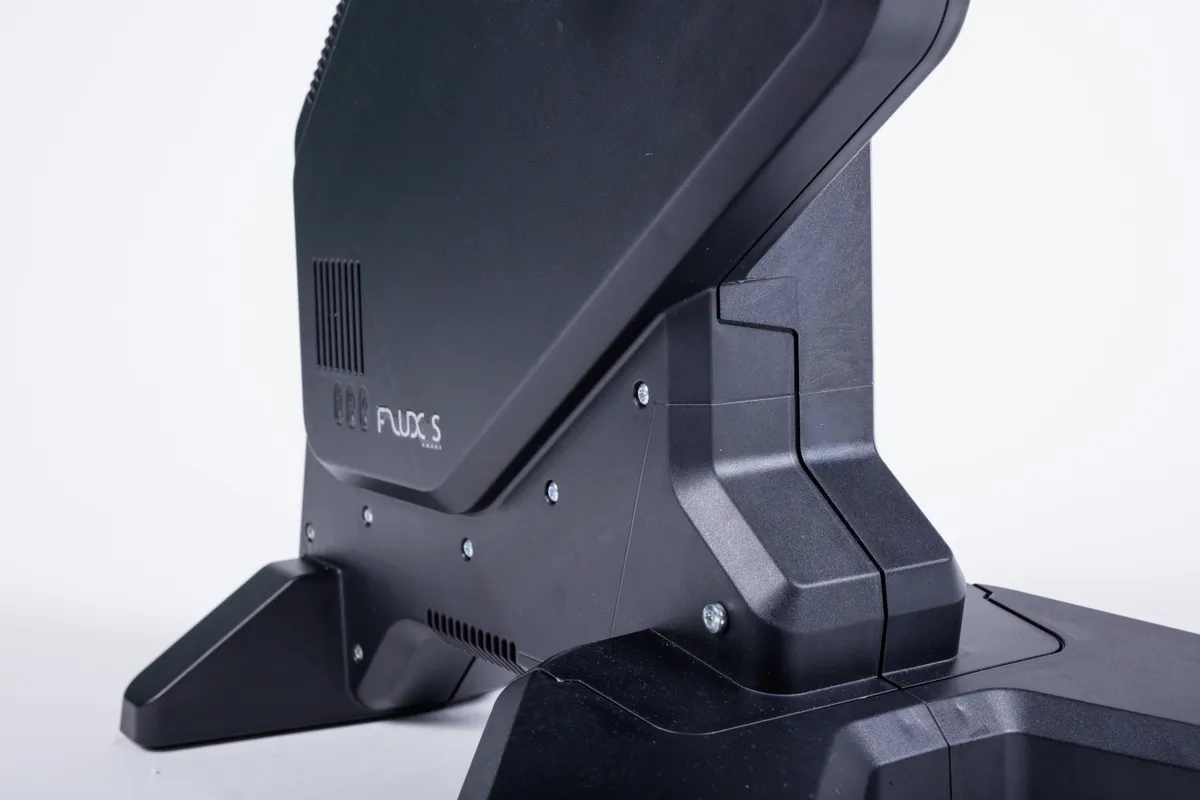If you’re interested in indoor training but are put off by the price of direct-drive trainers, the Tacx Flux S could be what you’re looking for, priced under £600 / $800 – under-cutting many of its competitors such as the Elite Suito and Wahoo Kickr Core.
While the company’s flagship Neo 2 will set you back £1,200 / €1,300 / $1,400 / AU$1,900, this model offers the most necessary features for less than half that price.
- Best smart turbo trainers for indoor training
- Which smart trainers are compatible with Zwift, TrainerRoad and The Sufferfest?
Out of the box, the Flux S is in two parts: the main body and the front support legs. You need to do some assembly by fitting the front legs, but this only takes a few minutes and an Allen key is supplied to make things easy. Once built, the Flux S is a neat looking package.
Unfortunately, the legs don't fold away for storage once fitted, which is fine if you have a dedicated pain cave but otherwise it does take up space measuring 67cm long x 64cm wide x 46cm high. Also, there's no carry handle and at 23.6kg this does make things a little more awkward when moving it around.
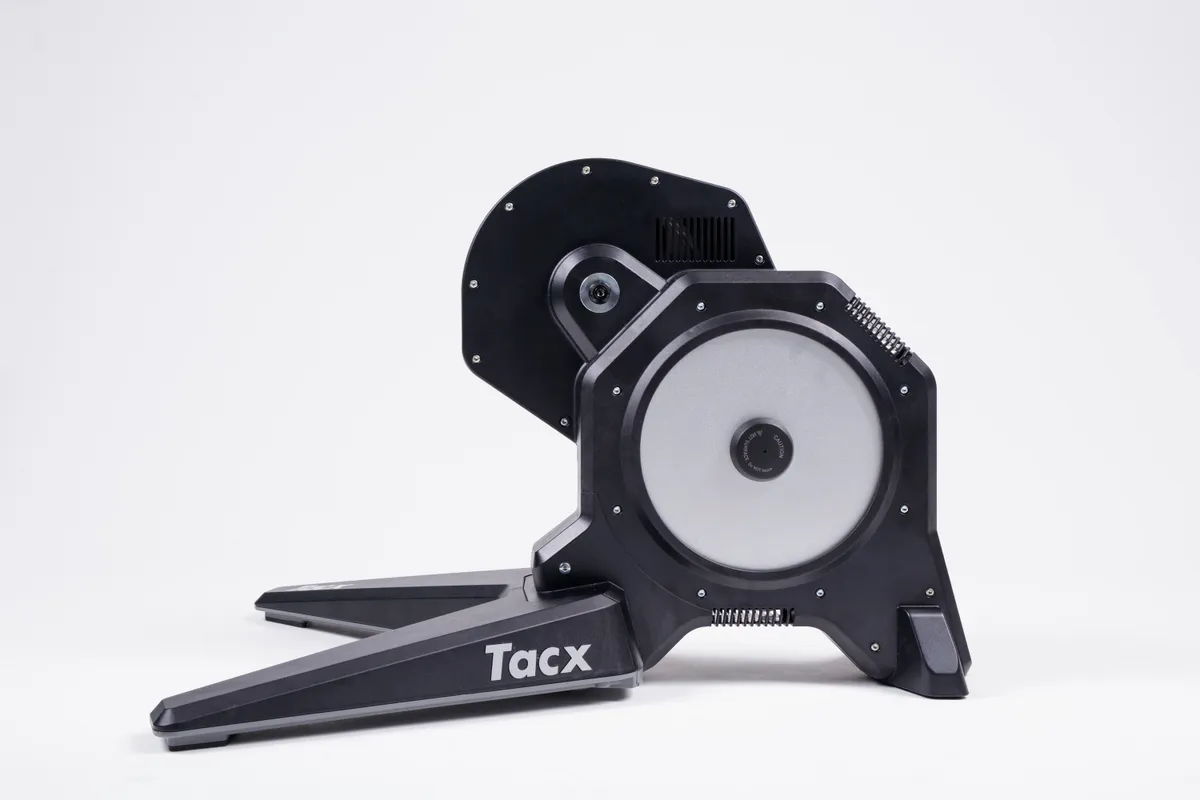
As with most of the more affordable smart trainers on the market, there's no cassette in the box, but Shimano and SRAM 8- to 11-speed cassettes fit directly, while a Campagnolo body is sold separately.
It will also work with MTB and CX 135mm axles, 142mm, 148mm and there's an adaptor available for 135 x 10mm.
There's no need to purchase a cadence sensor however because this Flux offers that data out of the box.
Fitting a bike is a simple affair and a single lead plugs you in. As with most trainers these days it hooks up with smartphones, tablets, ANT+FE-C bike computers and connects via ANT+.
The Flux S pairs seamlessly with Tacx's own app and works instantly with third-party software such as Zwift (which I used for testing) and TrainerRoad.
Tacx Flux S ride
The first thing I noticed is how stable the Flux S is, which impressed me with its budget-priced credentials. This is down to a combination of large footprint, well-placed legs and weight. At 23.6kg the Flux S feels rooted to the floor however hard you push it, whether in or out of the saddle.
Noise levels or the lack of them impressed me too. The difference between modern direct-drive units and on-wheel trainers is huge, which is thanks to the flywheel design system. While there is some noise, most of this comes from the transmission. I measured the Flux S at 60db on an iPhone app, while pushing 200 watts, and at these noise levels you're unlikely to upset anyone in the next room.
Tacx claims that its power figures are within 3 per cent accuracy and that seemed to be the case when compared to the Garmin Vectors I was using. Once again, impressive for a smart trainer at this price. I was also impressed with the cadence data provided by the Flux S, which matched my Vectors.
The Flux S can simulate climbs of up to 10 per cent, and although this might not sound like much compared to its bigger sibling's, the Neo 2, gradients of up to 25 per cent, for most this will be enough. Especially when you consider that Mont Ventoux has an average gradient of 7.4 per cent, so you know you have plenty to work with.
The general ride feel is good and this is largely down to the 7.6kg flywheel. It's heavier than all of its similarly priced competitors and gives a life-like ride that compares well to trainers costing double the price. Tacx has done a good job of filtering down technology from its top-end trainer.
The resistance, which works thanks to electromagnets, feels good too, especially when using Zwift and hitting the climbs. It's smooth and adds to the overall feel and enjoyment when training indoors. The Flux S offers a maximum 2,000 watts of resistance, which is more than enough for most of the cycling population.
When using just the Tacx app through your smartphone you can control both power and gradient settings. In this mode I did find a little lag, but I'd guess that most riders will be training with one of the many other software packages available anyway.
Tacx Flux S overall
Tacx has delivered a very capable trainer with the Flux S that offers a great introduction into the world of smart trainers. In fact, for most riders it will offer more than enough interactive features to have a good indoor training experience and some fun.
Add great ride feel, ease of set-up and use, and the price tag and the Flux S is impressive. The only real downsides are the lack of carrying handle and that the legs don't fold away for storage - but neither is a major issue.
Product
| Brand | tacx |
| Price | 1000.00 AUD,599.00 EUR,549.00 GBP,749.00 USD |
| Weight | 23.6000, KILOGRAM () - Total weight |
Features
| br_foldingLegs | no |
| br_trainerType | smart_trainer |
| br_resistanceType | electromagnetic |
| br_connectivity | antPlus_fe_c |
| br_connectivity | bluetooth |
| br_maxPower | 1500.0000 |
| br_maxPower | WATT |
| br_flywheelWeight | 7.0000 |
| br_flywheelWeight | KILOGRAM |
| br_maxGrade | 10.0000 |
| br_dimensions | 67cm x 64.2cm (Footprint) |
